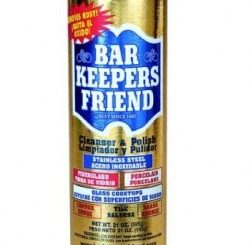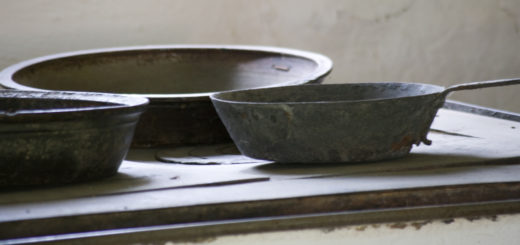Caring for Cast Iron
Q: Chef, what are the benefits of seasoning my cast iron pan, and how do I go about doing so?
A: Seasoning a cast iron pan helps seal the surface, which enhances non-stick qualities and protects against rust. Cast iron pots and pans vary, so definitely take your time choosing the one with the smoothest surface, as this also minimizes the potential for rust and helps ensure even seasoning.
The seasoning process basically involves coating your cast iron cookware with grease and popping it in the oven. This “melts” the grease into the pores of the cast iron, providing a smoother, non-stick coating on the surface.
1. Preheat the oven to 300° F.
2. Make sure the pan is completely dry. Then, using a paper towel, coat the pan with lard or bacon grease. Avoid using vegetable oil, as it generally leaves a sticky surface and wears off quickly.
3. Bake the pan for 15 minutes, then carefully remove it and pour out any excess grease. Place the pan back in the oven and bake it for an additional two hours.
4. Turn off the oven and let the pan cool. Remove the pan from the oven, wipe off any excess grease, and it’s ready to use. For best results, use the pan to prepare high-fat, low water dishes for the first few uses, as this helps set the cure.
To maintain the cure on your pan, you should wash the seasoned pan quickly with mild soapy water after each use, as too much scrubbing or hot water can diminish the effects. Re-season the pan following the same process when you notice rust, or if food starts sticking to it.
Additionally, it is good to note that properly seasoned pans turn darker with age, and a well-seasoned cast iron piece can certainly last multiple generations.
Have a question for Chef? Shoot an email to chef@urbanvivant.com! We’d love to hear from you




Recent Comments